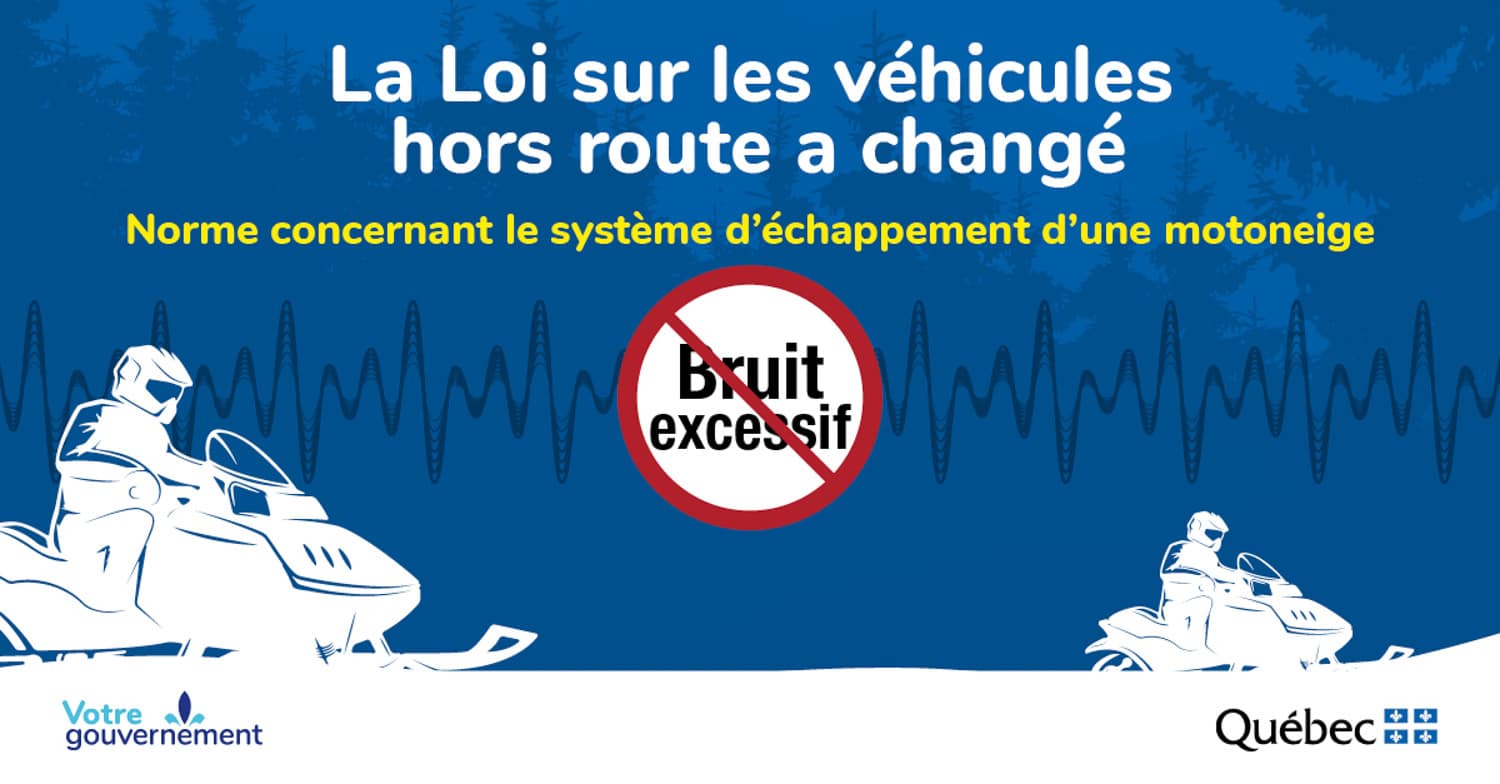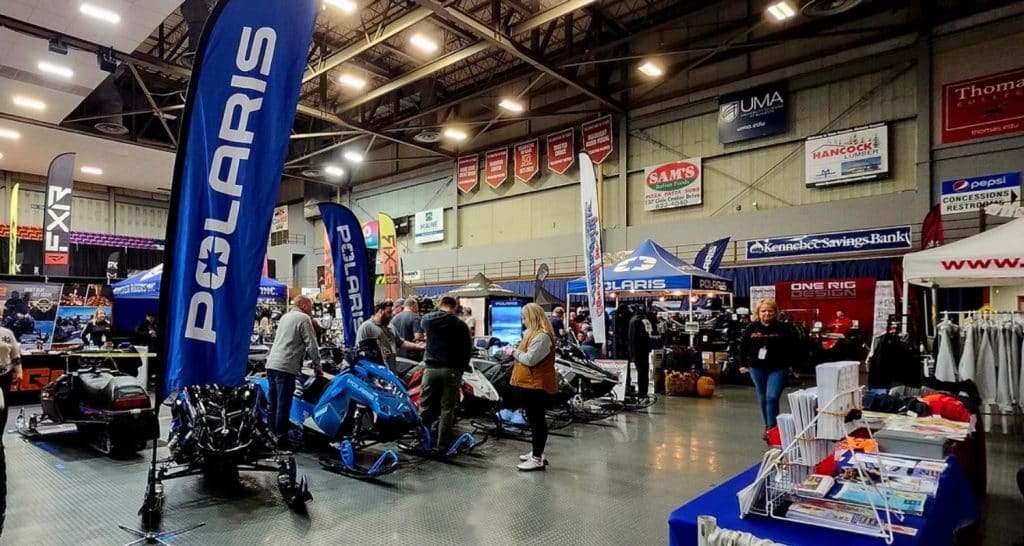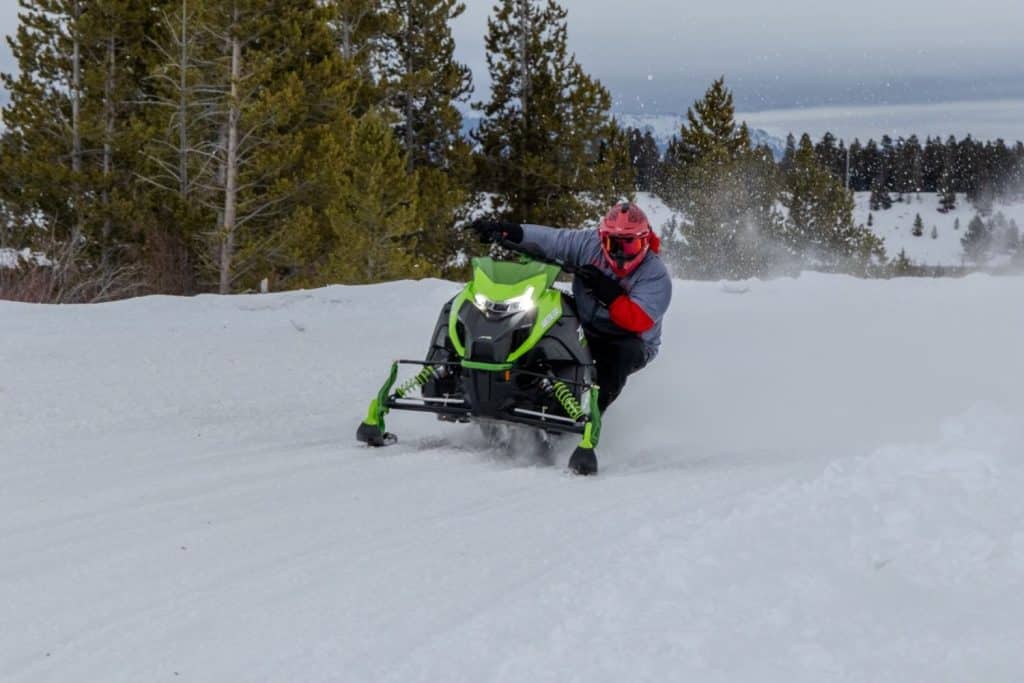Did you know that the Off-Road Vehicle Act includes provisions that prohibit modifying a manufacturer-installed exhaust system to make it louder or otherwise?
These provisions apply to all types of off-road vehicles (ORVs), but there is a measure in the Off-Road Vehicle Regulations that specifies standards for the exhaust system of a snowmobile.
Snowmobile owners had until December 10, 2021 to install an exhaust system that meets the SSCC/11 standard and bears the name of the original manufacturer. This standard certifies that the exhaust system meets the noise emission requirements. There is an exception for snowmobiles manufactured before 2011.
In short, it is not permitted to:
- Operate a vehicle equipped with a straight or loud exhaust system, shortened, perforated, drilled or recessed muffler, or a bypass or similar device;
- operate a snowmobile with an exhaust system that does not meet the SSCC/11 standard;
- sell a new snowmobile or demonstrator with an exhaust system that does not meet the SSCC/11 standard;
install or cause to be installed on a snowmobile a muffler that does not comply with the SSCC/11 standard.
Remember that a vehicle that produces excessive or unusual noise not only puts its owner at risk of being fined, but can also inconvenience other users of the area, whether they be residents, recreationalists or even animals!
New Off-Road Vehicle Act
The implementation of this measure stems from the new Off-Road Vehicle Act (ORVA), passed in December 2020. This law is the realization of a major reform of the OHV framework.
For the purposes of the OHSA, an ORV is a snowmobile, motorcycle, quad bike or all-terrain motorcycle, including a motocross bike, and any other motorized vehicle primarily designed or adapted for use on rough surfaces or unpaved or difficult-to-access terrain, including surfaces consisting of snow, ice, dirt, sand or gravel, as well as woodlands and other natural environments.
To qualify as an ORV, the vehicle must be primarily designed or adapted to operate on these unpaved or difficult to access surfaces or terrains.
La LVHR repose sur trois grands principes :
- Strengthening security
The key measure is the requirement to have a driver’s licence to operate in off-road areas, including on a trail. In addition, there are new measures governing the training of tour guides and the rental of OHVs. - Respect for the natural and social environment
New standards of conduct, rules of caution and measures for harmonious cohabitation are proposed. The goal is to promote the sustainability of recreational activities while taking into account respect for the natural environment and social acceptability. - Modernization of control and enforcement measures
The enhanced powers of trail patrol officers are intended to encourage safe behaviour by OHV users.
With this reform, the government is providing Quebec with a legislative framework that better corresponds to current needs. The main purpose of the OHSA is to ensure the safety of OHV users and the public while promoting harmonious cohabitation between the recreational use of these vehicles and other users of the territory.
To learn more, visit Québec.ca/loivhr






